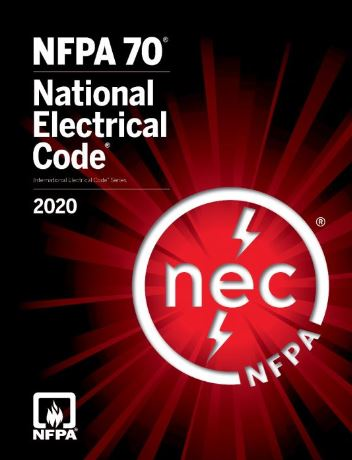

Subrule 3 directs the Code User to a new Table 68 for conductor length measured from the supply side of the consumer’s service to the furthest point of utilization on general use circuits not exceeding 120 V or 20 A in dwelling units. While the 3% and 5% limitations still apply to feeder or branch circuits and from the supply side of the consumer’s service (or equivalent) to the point of utilization respectively, notwithstanding clauses have been added for Residential and Industrial situations. In Section 8 the Voltage Drop rule (8-106) has been rewritten to better apply to specific installations. Additional scenarios are spelled out in Subrules 3 and 6. Additionally it should be noted that the temperature requirement of conductors only applies to the first 1.2 m of conductor length measured from the point of termination (Subrule 4) and if a splice is made to meet the temperature requirements of this rule, the conductor terminating to the equipment cannot be less than 1.2 m in length (Subrule 5). As a fix for equipment not marked for maximum conductor temperature, Subrule 2 has been rewritten to direct the Code User to consider the maximum conductor temperature to be 60☌ for equipment rated not more than 100 A or marked for use with conductor sizes 1/0 or smaller, and 75☌ for equipment rated more than 100 A or marked for use with conductor sizes larger than 1/0.Īs indicated in the Appendix B intent statement, the size of conductors terminating on equipment shall be not less than the conductor sized from the appropriate conductor temperature column in tables 1, 2, 3 or 4. This default temperature was never correlated with the CSA C22.2 Standards (for example, CSA C22.2 No.4 or CSA C22.2 No.5) as they were only evaluated relative to the appropriate temperature characteristics of the terminations to 75☌. In the 2012 CE Code, (which saw the introduction of this rule) 4-006 indicated a default maximum conductor temperature of 90☌ for equipment not marked for maximum conductor temperature.

For alternate configurations and conditions the Code User should consult the IEEE 835 calculation method.Īnother notable change to Section 4 will be with the clarification to Rule 4-006, Temperature Limitations. It is very important to remember that the ampacities listed in Tables D17A to D17N are only applicable for the configurations and conditions specified in Table D17. Cables within these voltage ranges will have ampacities that vary substantially based on the variables associated with their installation.

These two new items point to ampacity tables D17A through D17N for installation configurations and conditions described in the Table D17 installation diagrams. The Code User will see an increase in allowable ampacities associated with these Installations.Īdditionally, Rule 4-004(1)(g) for copper and 4-004(2)(g) for aluminum have been added to address the ampacities of shielded cables rated 5 kV to 46 kV in sizes No. In order to align the existing underground Tables (D8A through D15B) with the rest of the Code, the “A” Tables were re-calculated, making the “B” Tables unnecessary. The main change with these Appendix D Tables is also the removal of the “B” Tables. This new edition CE Code will have the ampacity tables and the diagrams all published in Appendix D. The 2012 CE Code had Users make reference to diagrams which were in Appendix B and try to manipulate to tables in Appendix D. Rule 4-004(1)(d) for copper and 4-004(2)(d) for aluminum have been adjusted to reflect the consolidation of the Appendix B Diagrams B4-1 through B4-4 with the ampacity tables in Appendix D. Section 4 will see several changes that should eliminate some of the frustrations Code Users have had with conductor ampacities associated with underground installations. This would include the rewrite of rules clarifying underground ampacity tables, the temperature requirements for conductor selection, voltage drop in dwelling units and industrial establishments, and arc-fault requirements in dwelling units. Within this article I would like to review some of the more deliberated changes that will affect certain installations. When released, Code Users will have an opportunity to see for themselves these changes. As I indicated last month, several changes will be evident in the 23rd Edition Canadian Electrical Code which is scheduled for publication in early January 2015.


 0 kommentar(er)
0 kommentar(er)
